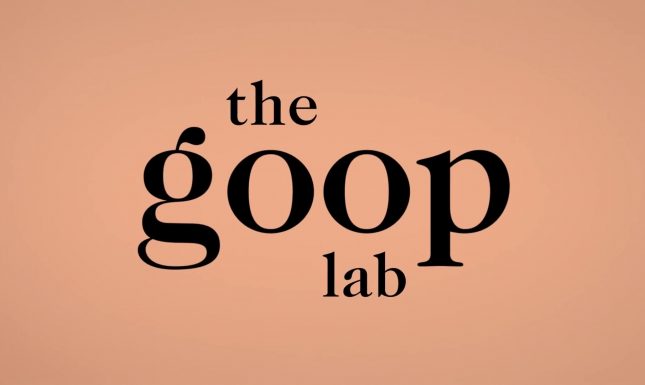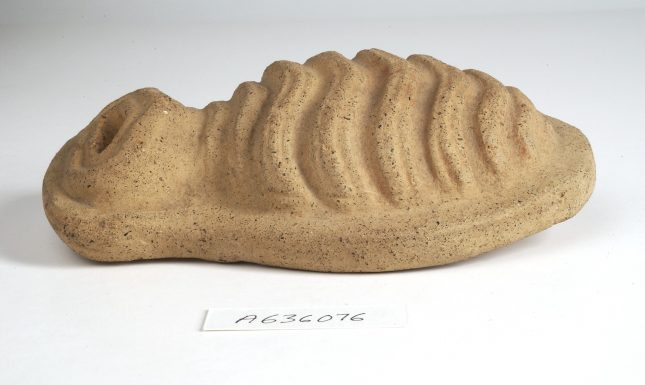V-Steaming: On Paltrow and Hippocrates
What do Gwyneth Paltrow and the Hippocratics have in common? Both endorse(d) vaginal steaming! Glyn discusses the ancient Greek phenomenon of uterine vapour baths, focussing on similarities between the cultural ideas underlying Hippocratic treatments and modern discussions of ‘v-steaming.’
In June 2019, the Journal of Obstetrics and Gynaecology Canada published a case of a woman who suffered second-degree burns on her uterus during vaginal steaming (Robert 2019: be warned, there is a graphic picture included in the article), in an attempt to reduce prolapse. This sparked attention on several media outlets, warning about possible burning when undergoing the treatment. Vaginal steaming was popularized by, among others, actress Gwyneth Paltrow in a blog for her (controversial) lifestyle company GOOP back in 2015. Although mentioned in several sources referred and linked to throughout this blog, I have not been able to find Paltrow’s blog on the subject. Clicking the link to her blog provided by The Guardian brings you to this page on infrared and detox spa treatments more generally, leading me to believe the blog post was removed. The treatment is apparently still offered by spas the world over, and has not lost in popularity—I was surprised to discover that when I googled ‘vaginal steaming’, the search engine immediately added ‘near me.’

The practice of ‘v-steaming’ involves sitting in a chair over a tub which usually contains hot water and one or several herbal ingredients. The steam rises up through the hole in the seat of the chair, and is supposed to cleanse and/or cure vagina and womb. There is no scientific proof for the efficacy of the treatment, other than that it might help the ‘patient’ relax (as any steam bath can). In fact, it might even be harmful, leading to increased risk of vaginal infection. Different origins have been claimed for the practice, with the Chinese traditional medical moxibustion being mentioned especially often. However, I am a classicist, and although one website reports having found no indication for vaginal steaming practices in ancient Greece (see, however, these more recent blog posts comparing Greek and Babylonian ‘vaginal steaming’ practices), I here want focus on the practice of gynaecological fumigation and fomentation, especially common in several treatises of the Hippocratic Corpus. I should note, however, that the treatment was common in ancient Greek medicine more generally, occurring quite often in the work of later medical authors such as Galen and Oribasius.
For the Hippocratics, health was balance: a balance of fluids, and between opposites of bodily temperature and textures such as hot/cold; wet/dry; hard/soft. Excess leads to disease, and treatment is often focussed on restoring the balance. Within such a model of the body, it is not surprising that vapour baths were considered to be helpful in, for example, breaking out excess fluids and in softening several parts of the body. What I will refer to in this blog more generally as ‘vapour baths’ actually consist of two discrete treatments: fumigation (Greek: θυμιάω, ‘to fumigate’) requires dry ingredients as its base, fomentation (πυριάω, ‘to foment’) wet ingredients. However, as classicist Danielle Gourevitch (1996) has pointed out, the two verbs are used more or less interchangeably for similar treatments. Vapour baths are part and parcel of the Hippocratic therapeutic apparatus—the two verbs occur 58 and 231 times, respectively—and I do not aim to provide an exhaustive account of their contents and applications (for this, I refer to Totelin 2009). Rather, I wish to use several interesting features of modern day vaginal steaming as points of comparison to discuss specific facets of the ancient medical practice.


The most extensive publication on the cultural currency of vaginal steaming in the modern day West is Vandenburg & Braun 2017. In this study, the two researchers set out to uncover the cultural discourses that underlie vaginal steaming practices. For this, they analysed no less than 90 different online items on vaginal steaming, from news items to blogs and spa websites, which revealed several patterns in the ways the treatment was discussed. The two I find particularly interesting in relation to ancient Greek medical practices are an emphasis on the female body as before all a reproductive body, and the inherent ‘impurity’ of the female body. I want to stress that I only use these emphases as a way in to tackle the huge amount of material on uterine vapour baths in the Hippocratics, not to suggest any direct influence, entwined as these modern ideas are with specific cultural concepts such as neoliberalism and post-feminism (Vandenburg & Braun 2017). Another difference worth noting is that in many of the sources analysed by Vandenburg & Braun it is often the female patients themselves who endorse vaginal steaming practices (and underlying body images). This stands in stark contrast to the Hippocratic treatises, written from the perspective of the physician, and in which the patient’s side of the story is therefore notoriously difficult to grasp.
As Vandenburg & Braun note, many of the online items discussing vaginal steaming practices emphasize the positive effects of the treatment on the fertility of the women involved, which it is either necessary to maintain or to regain. Vapour bath treatises were by no means limited to the gynaecological treatises of the Hippocratic corpus: it occurs even in Joints, a treatise focussed on broken bones, where it is part of a forced reduction of a curved spine, although its exact function within that treatment is not stated (Joints 47). In fact, vapour baths are not always used to restore health at all: Diseases 2.61 includes treatment for water/dropsy in the lung. In this case, applying a vapour bath (presumably to the chest) does not bring out pus, which is the first indication that the lung is not filled with pus, but rather with water: the vapour bath is a test.


It is in the gynaecological treatises, however, and especially in the appendices of recipe lists to Diseases of Women (Mul.) 1 & 2, that the treatment most often occurs. Here, it is indeed aimed at restoring the fertility of women, and most often applied to (the mouth of) the uterus: Mul. 16, for example, includes a vapour bath of laurel in a treatment to clear out phlegm from the uterus and bring out the menses, and Mul. 132 discusses what to do when the womb has moved against the hip, impeding menstruation and the reception of sperm. Treatment includes a vapour bath with sweet smelling ingredients, likely aiming to lure the errant womb back into place. Many of the ingredients used, furthermore, are associated with sex. A bottle gourd (σικύη), elsewhere in the same treatise (Barren Women (Steril.) 10) explicitly associated with the penis, at Steril. 18 serves as the pipe of a vapour bath apparatus, over which the patient should position herself. Similar to modern day discourse, Hippocratic uterine vapour baths—and indeed Hippocratic gynaecology generally—focussed on monitoring fertility, revealing a female body reduced to its reproductive capacity (for an account of the Hippocratic female body, see, among many others, King 1998 and my previous blog on human milk in the corpus).

The second strand of cultural discourse I want to examine is the perceived inherent uncleanness of the female body, and especially of womb and pudenda. As Vandenburg and Braun note, many of the examined online items emphasize the need to clean or purify the womb and vagina, thereby implying these parts of the female body are usually ‘dirty.’ In ancient Greece, the female body, and in particular the uterus, were considered to be ritually impure. As classicist Heinrich von Staden (1992) has suggested, this essential impurity of female bodies helps to understand the use of some particular ingredients in Hippocratic gynaecology. For example, several vapour baths require urine as a base, sometimes other ingredients being added to the (human or cow) urine (Nature of Women 6 and 7; DW 75, 134; Steril. 9). Von Staden suggests to read cases like these as ‘like cures like’ – as urine is a ‘dirty’ ingredient, it can help treat a dirty body part, such as the uterus. This connection between ritual impurity and vapour baths is interesting: indeed, ritual practices pervade the gynaecological treatises of the corpus. One particularly elaborate vapour bath, for example, calls for a puppy—disembowelled and stuffed with herbs—which is set in a pot into which wine is poured, serving as the base for a fomentation to bring back the patient’s menses (Steril. 18). This exceptional treatment makes sense when compared to purifying rituals in Greek literature (Muitjens 2019). Within the Hippocratic treatises, vapour baths thus indeed turn out to be, as one blog puts it “sorcery for your vagina.”
References
Gourevitch, Danielle. 1996. “Fumigation et Fomentation Gynécologiques.” In Aspetti della Terapia nel Corpus Hippocraticum, edited by Ivan Garofalo et al., 203-217. Florence: Leo S. Olschki Editore.
King, Helen. 1998. Hippocrates’ Woman: Reading the Female Body in Ancient Greece. London and New York: Routledge.
Muitjens, Glyn. 2019. “‘Bring the Puppy here’: Sophron fr. 4A Hordern (PSI XI 1214a) and Hippocratic Gynaecology.” Mnemosyne 72 (3): 384-404.
Robert, Magali. 2019. “Second-Degree Burn Sustained After Vaginal Steaming.” Journal of Obstetrics and Gynaecology Canada 41 (6): 838-839.
Totelin, Laurence. 2009. Hippocratic Recipes: Oral and Written Transmission of Pharmacological Knowledge in Fifth- and Fourth-Century Greece. Leiden and Boston: Brill.
Vandenburg, Tycho, and Virginia Braun. 2017. “‘Basically, it’s sorcery for your vagina’: unpacking Western representations of vaginal steaming.” Culture, Health & Sexuality 19 (4): 470-485.
Von Staden, Heinrich. 1992. “Women and Dirt.” Helios 19: 7-30.
© Glyn Muitjens and Leiden Arts in Society Blog, 2020. Unauthorised use and/or duplication of this material without express and written permission from this site’s author and/or owner is strictly prohibited. Excerpts and links may be used, provided that full and clear credit is given to Glyn Muitjens and Leiden Arts in Society Blog with appropriate and specific direction to the original content.



0 Comments